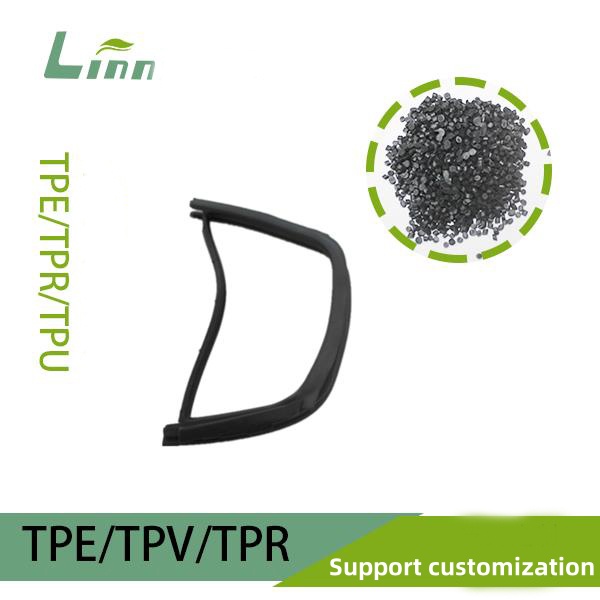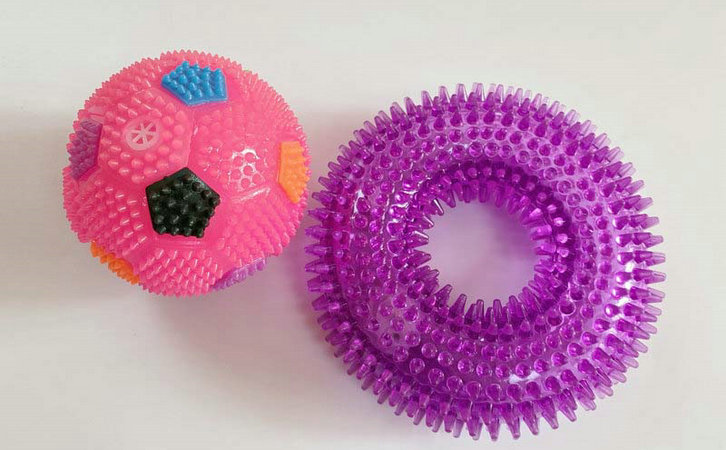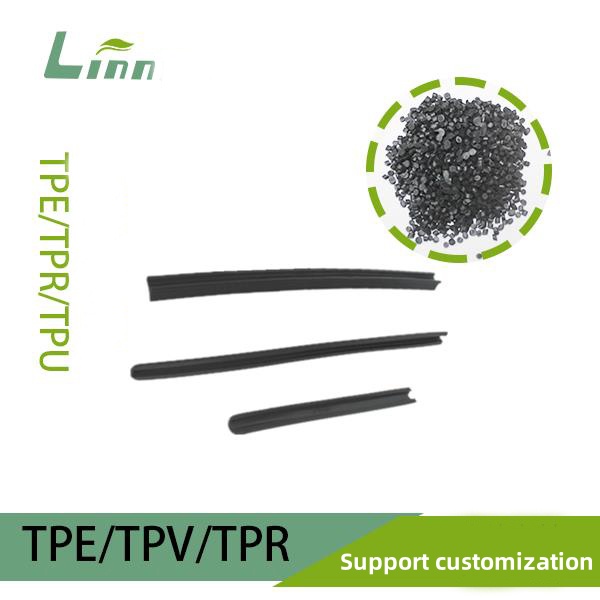I’ve been in the materials game for over a decade, working on everything from rubber gaskets to high-tech polymers, and TPE (Thermoplastic Elastomer) is one material I’ve come to know inside out. It’s a star player in automotive sealing strips—those flexible, weatherproof bands that keep car doors, windows, and trunks snug against wind, rain, and noise. But when it comes to collecting and storing these TPE strips after production or during installation, things can get tricky. I’ve been on factory floors where poorly handled strips turned into tangled messes, costing time and money. If you’re wondering how to gather and store TPE sealing strips without ruining them, I’m here to share what I’ve learned through years of trial and error, from small workshops to massive auto plants.

1. Why Proper Collection and Storage of TPE Sealing Strips Matters
TPE sealing strips are a big deal in cars. They’re soft, durable, and can handle extreme weather, which is why they’re used in everything from door seals to sunroof linings. But they’re not indestructible. Mishandle them during collection—say, during production or assembly—and you risk deformation, kinking, or surface damage. Store them wrong, and they might stick together, lose elasticity, or pick up dirt, making them useless for installation.
I learned this the hard way early in my career. A client asked me to troubleshoot why their TPE door seals kept failing quality checks. Turns out, the strips were being tossed into bins post-extrusion, twisting and sticking under their own weight. Fixing the collection process saved the batch, and it taught me that how you handle TPE matters as much as how you make it. Let’s dive into the right way to collect and store these strips, step by step.
2. Understanding TPE Sealing Strips
Before we get to the how-to, let’s talk about what makes TPE sealing strips special. TPE, or Thermoplastic Elastomer, is a blend of rubber-like elasticity and plastic-like moldability. In automotive seals, it’s often SEBS-based for its weather resistance and flexibility, sometimes mixed with fillers to tweak hardness or cost. Strips are typically extruded into long, continuous shapes—think U-shaped door seals or flat window gaskets—with Shore A hardness ranging from 50 to 80, per ASTM D2240.
These strips are designed to bend without breaking, seal tightly, and last years in heat, cold, or rain. But their soft, tacky nature means they can deform under pressure, stick to themselves, or attract dust if not handled carefully. My first TPE seal project was for a car trunk, and I was amazed at how a perfectly extruded strip could turn into a knotted mess if you didn’t collect it right.

3. Collecting TPE Sealing Strips During Production
Collecting TPE sealing strips starts the moment they leave the extruder or molding machine. I’ve seen factories do this well and others botch it completely, so here’s what works based on my experience.
3.1 Coiling for Continuous Strips
Most TPE sealing strips are extruded in long lengths—sometimes hundreds of feet—so coiling is the go-to method. I used this for a window seal project, and it kept things tidy.
How It Works: Feed the strip onto a rotating drum or coiling machine as it exits the extruder. Adjust the drum’s speed to match the extrusion rate, avoiding stretching or compression.
Pros: Keeps strips untangled, saves space, easy to inspect.
Cons: Needs equipment, risk of tight coils deforming soft TPE.
Tips: Use drums at least 3 feet in diameter to prevent kinking, and apply light tension—about 0.5-1 pound, depending on strip size. I always check for spring-back to ensure the strip isn’t overstressed.

3.2 Cutting and Stacking for Fixed-Length Strips
If strips are cut to specific lengths (say, for door frames), stacking is common. I helped a factory set this up for trunk seals, and it cut waste dramatically.
How It Works: Cut strips to size using a guillotine cutter or rotary blade, then lay them flat on a conveyor or pallet. Use spacers (like foam or cardboard) between layers to prevent sticking.
Pros: Ideal for assembly lines, easy to count and pack.
Cons: Labor-intensive, needs careful alignment to avoid crushing.
Tips: Keep stacks under 2 feet high to reduce pressure, and use non-stick spacers for tacky TPE grades. I’ve found cooling strips to 68°F (20°C) before stacking helps.
3.3 Automated Collection Systems
For high-volume plants, automation is a lifesaver. I saw this in action at an auto supplier making 10,000 seals daily.
How It Works: Use robotic arms or conveyor systems to coil, cut, or stack strips. Sensors ensure precise handling, and cooling tunnels stabilize TPE before collection.
Pros: Fast, consistent, low error rate.
Cons: High setup cost, needs maintenance.
Tips: Calibrate systems to handle TPE’s Shore A range, and test for surface tack to avoid jams. I always run a pilot batch to fine-tune settings.

3.4 Cooling Before Collection
TPE strips are hot—up to 392°F (200°C)—when extruded, so cooling is critical. I learned this fixing a batch of sticky hood seals that fused during coiling.
How It Works: Pass strips through a water bath or air-cooling tunnel to drop them to 86°F (30°C) or lower before coiling or stacking.
Pros: Prevents sticking, preserves shape.
Cons: Adds a step, water baths need drying.
Tips: Use filtered air or low-pressure water to avoid residue, and dry strips completely to prevent mold. I aim for a 2-5 minute cooling cycle, depending on thickness.
4. Storing TPE Sealing Strips
Once collected, storage is where you keep TPE strips in top shape until they’re installed or shipped. I’ve seen warehouses ruin good seals with bad habits, so here’s how to do it right.
4.1 Temperature Control
TPE hates heat—it softens, sticks, or deforms above 104°F (40°C). I fixed a storage issue for a client whose seals melted into clumps in a hot warehouse.
How It Works: Store strips at 59°F to 77°F (15°C to 25°C), ideally in a climate-controlled room. Avoid direct sunlight or heaters.
Pros: Maintains elasticity, prevents oiling out.
Cons: Needs cooling systems in warm climates.
Tips: Monitor with thermostats, and keep strips off concrete floors, which can trap heat. I’ve used insulated racks to great effect.

4.2 Humidity Management
Moisture can make TPE tacky, especially TPU-based grades. I saw this in a coastal factory where seals got sticky during monsoons.
How It Works: Keep humidity below 50% using dehumidifiers or desiccant packs in storage areas. Seal strips in polyethylene bags for long-term storage.
Pros: Stops sticking, protects surface finish.
Cons: Desiccants add cost, needs monitoring.
Tips: Check humidity with hygrometers, and inspect bags for airtight seals. I’ve found silica gel packs work wonders for small batches.
4.3 Proper Packaging
How you pack strips matters. I helped redesign storage for sunroof seals that kept kinking in tight boxes.
How It Works: Coil strips loosely in cardboard reels or lay flat in rigid crates with foam dividers. Use anti-stick films (like polyethylene) for tacky TPE.
Pros: Prevents deformation, easy to transport.
Cons: Packaging costs add up, needs space.
Tips: Label crates with weight limits—no more than 100 pounds per crate—to avoid crushing. I prefer vented reels for air circulation.

4.4 Avoiding Contamination
TPE attracts dust and oils like a magnet. I once salvaged a batch of door seals that got grimy from an oily storage rack.
How It Works: Store in clean, dust-free zones. Cover strips with breathable tarps or store in sealed containers. Clean racks with isopropyl alcohol before use.
Pros: Keeps seals pristine, passes quality checks.
Cons: Requires strict housekeeping.
Tips: Use HEPA filters in storage areas, and inspect strips for debris before packing. I’ve trained teams to do this daily.
4.5 First-In, First-Out (FIFO)
TPE doesn’t expire, but long storage can degrade it. I saw a batch of seals lose elasticity after two years in a forgotten corner.
How It Works: Rotate stock so older strips are used first. Label batches with production dates and track with inventory software.
Pros: Ensures freshness, reduces waste.
Cons: Needs organization, staff training.
Tips: Set 6-12 month rotation cycles, and inspect older stock for tackiness or discoloration. I use barcode scanners to keep it simple.
5. Comparing Collection and Storage Methods
Here’s a table summing up the main methods I’ve used, based on projects from small runs to mass production. It shows what fits different setups.
| Method | Best For | Equipment Needed | Cost | Risks | Effectiveness |
|---|---|---|---|---|---|
| Coiling | Long, continuous strips | Coiling drum | Medium | Kinking, overstretching | High |
| Cutting/Stacking | Fixed-length strips | Cutter, conveyor | Low | Sticking, crushing | Medium-High |
| Automated Systems | High-volume production | Robots, conveyors | High | Setup errors, maintenance | Very High |
| Cooling | All strips, post-extrusion | Water bath, fans | Medium | Residue, overcooling | High |
| Temp-Controlled Storage | Long-term storage | AC, thermostats | High | Energy costs | Very High |
| Humidity Control | Tacky TPE grades | Dehumidifiers | Medium | Missed spots, mold | High |
| Proper Packaging | Transport, sensitive strips | Reels, crates | Medium | Space needs, packing errors | High |
This table assumes SEBS-based TPE with Shore A 60-80. Softer or tackier grades may need extra care.
6. Lessons from Real Projects
I’ve handled TPE seals in all sorts of scenarios, and each job taught me something. Here’s what I’ve seen:
Door Seals: A plant coiled seals too tightly, causing kinks. Switching to larger 4-foot drums and cooling to 77°F (25°C) fixed it, saving 90% of the batch.
Window Strips: Stacked strips stuck together in humid storage. Adding desiccant packs and polyethylene dividers kept them pristine for six months.
Trunk Seals: Automated coiling jammed due to tacky TPE. A talc dusting (0.2% by weight) and slower drum speed solved it without quality loss.
Sunroof Linings: Dust ruined a batch in an open warehouse. Moving to sealed crates and HEPA-filtered rooms cut rejects to zero.
Hood Seals: Old stock stiffened after a year. Implementing FIFO and 12-month checks ensured fresh seals for assembly.
These cases show that small tweaks—like cooling or packaging—can make or break your process.

7. Technical Bits for the Curious
If you’re a materials nerd like me, here’s why TPE seals need careful handling. TPE’s block copolymer structure—soft segments like polybutadiene, hard ones like polystyrene—gives it elasticity but also surface tack, especially in Shore A <70 grades. Heat above 104°F (40°C) softens the matrix, letting strips deform or stick, per ASTM D1525. Humidity can trigger hydrolysis in TPU-based TPEs, making them tackier. Cooling to 68°F (20°C) locks the structure, while low humidity (below 50%) prevents water absorption, keeping seals stable.
8. Tips for Smooth TPE Handling
Beyond collection and storage, here’s some wisdom I’ve picked up:
Work with Suppliers: Share your production setup—extrusion speed, seal length. I’ve gotten custom TPE blends with less tack for easier coiling.
Test Handling: Run a pilot batch to check for sticking or kinking. I caught a bad coiling setup this way before it ruined 1,000 feet of seal.
Train Staff: Teach workers to spot issues like overstacking or hot spots. A sharp team saved me once by flagging a humid storage room.
Track Conditions: Log temp, humidity, and storage time. It helped me trace a deformed batch to a truck left in the sun.
Plan for Transport: Use padded crates for shipping to avoid crushing. I’ve seen seals arrive perfect after cross-country hauls this way.

9. What’s Next for TPE Seals?
TPE tech is evolving, and I’m excited about what’s coming. Low-tack TPEs are making collection easier, with less sticking even in warm conditions. Bio-based TPEs are greener and often less prone to deformation. I tested a new SEBS blend last month that coiled like a dream at 86°F (30°C)—no cooling needed. Automated systems with AI sensors are also popping up, fine-tuning coiling for zero defects. These could make handling seals smoother than ever.
10. Common Questions Answered
I get asked a lot about TPE seals, so here’s what I’ve learned:
Q1: Can I store TPE seals outdoors?
A: Not ideal—sunlight and heat deform them. If you must, use UV-resistant covers and keep under 86°F (30°C).
Q2: Why do my seals stick together?
A: Likely heat, humidity, or tacky TPE. Cool to 68°F (20°C), use dividers, and check for low-tack grades.
Q3: How tight can I coil TPE strips?
A: Use drums at least 3 feet wide with 0.5-pound tension. Tighter risks kinks, especially for Shore A <60.
Q4: Do I need to clean TPE seals before storage?
A: Yes, wipe with isopropyl alcohol to remove oils or dust. It keeps them installation-ready.
Q5: How long can I store TPE seals?
A: Up to 2 years if kept at 59°F-77°F (15°C-25°C) and <50% humidity. Rotate stock to stay fresh.
Wrapping Up
Collecting and storing TPE automotive sealing strips isn’t rocket science, but it takes care to keep them flexible, clean, and ready to seal. Whether you’re coiling long runs, stacking cut pieces, or storing for months, the right setup—cool temps, low humidity, smart packaging—makes all the difference. My years handling TPE have shown me it’s a material that rewards attention to detail. Get it right, and your seals will fit like a glove on every car.
If you’re wrestling with TPE seals or planning a new line, I hope these tips save you some headaches. Got a specific snag? Drop me a line—I’d love to swap ideas!





